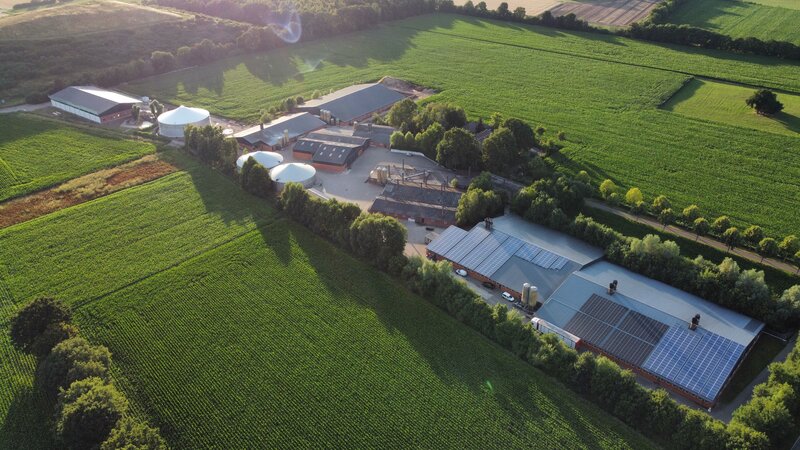Energy-Efficient Pig Farming at Guido Tenhagen's Farm
A Family Farm Continues to Rely on Modern Combined Heat and Power (CHP) Technology
Facts & figures

Guido Tenhagen runs a family farm specializing in raising sows and piglets. The herd comprises approximately 2,000 sows. Piglet rearing takes place in an adjacent barn, built in 2004 and expanded with a second barn in 2010. Raising sows and piglets requires a significant amount of energy – particularly to ensure consistent air quality and temperature. In 2004, energy needs were met by heating oil, while electricity was drawn from the public grid. Around 100,000 liters of heating oil were needed annually for heat generation alone.
Switching to CHP Technology from 2004
"I became aware of the advantages of combined heat and power (CHP) plants powered by natural gas through colleagues," reports Guido Tenhagen.
"This technology offered the opportunity to significantly increase our energy efficiency." Implementation was initially challenging due to a lack of grid connections – for both electricity and gas. This challenge was successfully overcome through the expansion of the local power grid and the use of liquefied petroleum gas (LPG).
In 2014, the farm commissioned its first g-box 20 – a combined heat and power (CHP) unit with an electrical output of 20 kW and a thermal output of 43 kW. This CHP unit has since covered the base load of heat and electricity in the sow barn. The system was supplemented by a 4,500-liter thermal storage tank, which allows for the delayed use of the heat.
The generated heat is used entirely on-site. Excess electricity that is not consumed on-site is fed into the public grid and compensated at 16 cents per kilowatt-hour.
With the new CHP Act, operating a g-box is worthwhile for every pig farmer – because self-generated electricity is compensated at up to 26 cents per kWh.
Plant Modernization and Expansion
After more than 60,000 operating hours, the first g-box 20 was replaced with a new unit in 2022 – partly to continue benefiting from the CHP bonus. Two years later, in 2024, a further grid expansion enabled the addition of a more powerful g-box 50plus with 50 kW of electrical and 100 kW of thermal output. This new unit was installed in the adjacent piglet barn.
"We need electricity and heat continuously," explains Guido Tenhagen. "And if a CHP unit is particularly cost-effective anywhere, it's in sow and piglet breeding."
The installation of combined heat and power (CHP) plants with an electrical output of 50 kW or less qualifies for subsidies of up to €240,000 over the total operating period.








